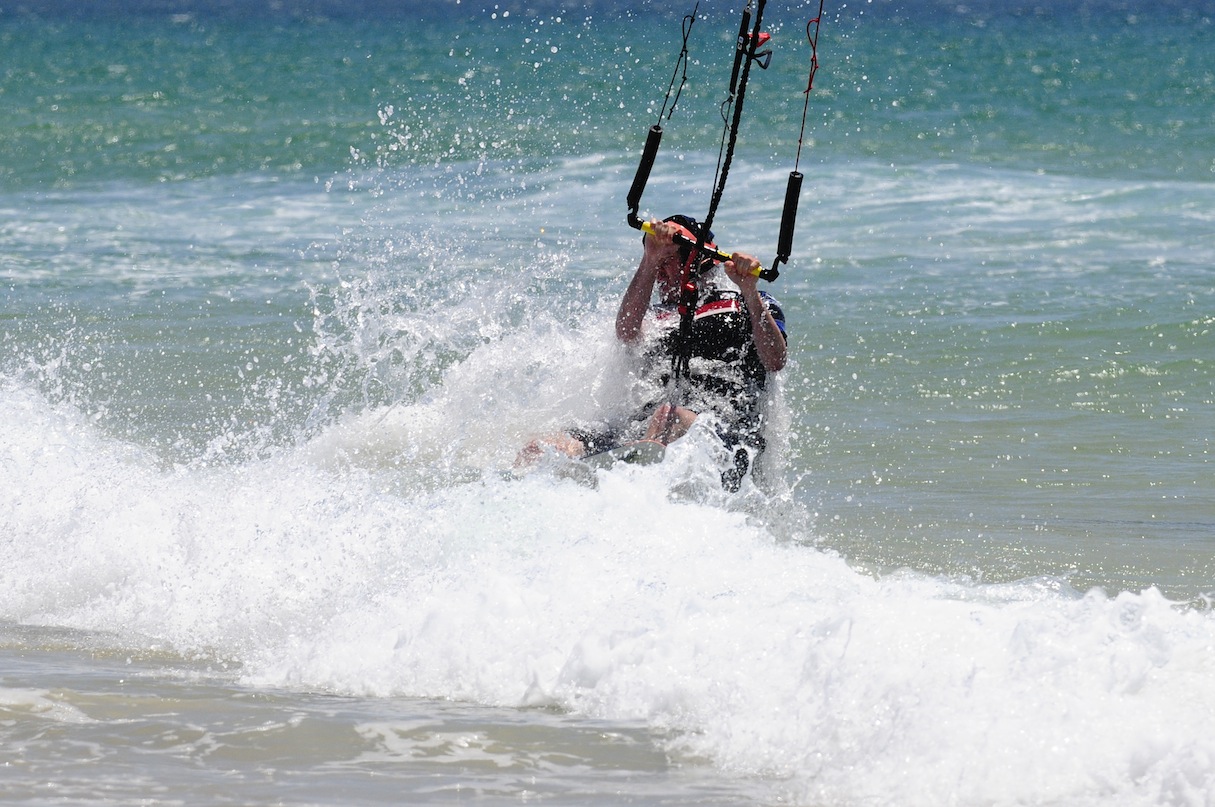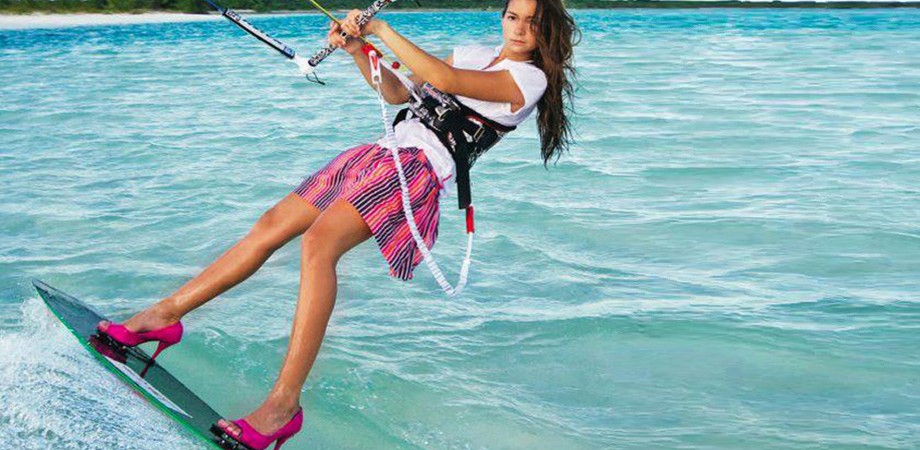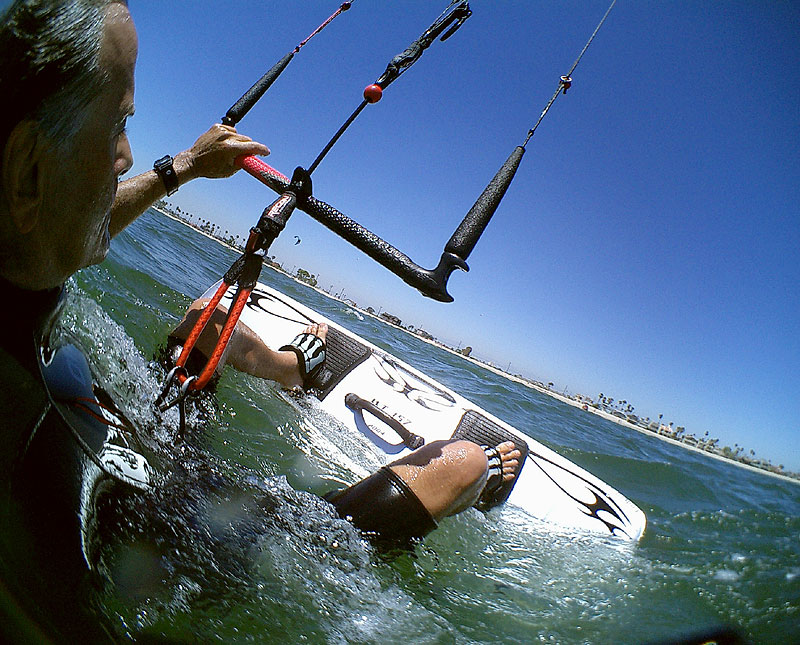
[vimeo height=”315″ width=”560″]http://vimeo.com/60950423[/vimeo]
We now going to talk about one of the most important and under emphasized skills in kite surfing. Getting the damn board on your feet!
Most people simply assume that this skill will be almost automatic, unfortunately it is anything but. Yet it truly defines the difference between someone who will learn to kite and someone who’s just splashing around in the waves.
Once you can get the board on your feet and keep yourself steady, even when being battered by waves and strong currents. You will be able to practice the water start time and again, without worrying about the board staying on your feet or you spinning out under the kite.
First things first, before even worrying about the water I would start by practicing this on land, in light, non gusty wind. Fly your kite, sit down on the beach and simply practice getting the board on your feet.
Use The Force, Luke
Even at this early stage, 3 main principles apply:
- You must keep your back to the wind at all times.
- You must keep your eyes on your kite, you need to use the force to get the board on your feet.
- To have any chance of getting the board on your feet at all you must make yourself as small as possible when bending your legs from the knees and crunching from the waist.
After you’ve mastered this, ditch the kite and head out into the water with the aim of simply practicing putting the board on your feet. If you do this pretending you do have a kite i.e. only using one arm, you can make it a little bit more realistic. The same principles we mentioned above still apply.
This may seem like a fairly pointless exercise but it is great for building up those neural connections you then need when you do this with a kite.

So now you’ve done that I will explain the reasoning behind it.
At this stage the key issue in getting the board on your feet is to crunch from the waist.
It is very easy especially when supported by the water to lie back. This not only increases the distance from your arms to your feet making it physically more difficult to get the board on, but also leads to you power the kite up involuntarily, which is the last thing you want at this moment.
Don’t Believe Me?
Perform a simple experiment.
Lie down on the beach with your knees bent, as if you were trying to get the board on your feet. Lay with your back flat against the sand. Now imagine the distance between your harness and your bar, if you were attached to the kite.
Now perform a simple crunch and look again what happens to the distance between your (imaginary) bar and your harness hook. If I’ve explained this at all well, so you actually have any idea what I’m talking about, you will see that when you crunch, the bar is naturally a lot further out than when you are lying on your back.
This is CRUCIAL
By letting the bar out you are de powering the kite, this means the kite isn’t trying to pull you left, right and all over the place while you’re performing the delicate task of placing the board on your feet.
Conversely when you’re laying back with the bar fully in (and the steering lines tight) every little movement of your hand is transferred to the kite which will be bucking around with power, attempting to thwart your best efforts to get the board on your feet.
Most modern kites will actually sit at the apex (the 12 o’clock position) for about 5 to 10 seconds when fully de powered. This is more than enough time for you to get the board on your feet without worrying about the kite. If it’s not, you simply trim in, steer slightly and you’re good to go again.

Armed With This Knowledge
Now you know this, take the kite back into the water and try get the board onto your feet while attached to the kite, remembering at all times to keep your back to the wind. If at any time you become unsure which way the wind is blowing, as can often happen, simply look at the kite. With the kite at 12 o’clock the central strut will be pointing directly towards the wind, use this to align yourself.
If you do feel yourself spinning out under the kite, simply use your free arm to paddle yourself around, if possible. Another way to achieve this is to use the kite. Once you feel yourself spinning under the kite move the kite across to the direction of spin (the same side your feet are spinning towards). You can then push against the pull of the kite to get yourself back to wind again.
If you find yourself too far spun to recover (I normally reckon anything past 90 degrees) simply kick the board off and start again. If you find yourself in the un enviable position of being totally back to front, simply let go of the kite and kick your legs to re right yourself…knowing which way is right and left when your upside down under the kite is not something I’ve seen too many people master at this stage
Once you have the board on your feet simply drift downwind with it for 10 to 20 m, keeping your back to the wind, kick it off and start again.
I found this article very usefull, because it deals w a managing a routine that is crucial for learning waterstart, but is omitted in most articles. Have a look at the many video’s out there: the board is already in place…even in the few lessons I took, the problem of getting your feet into the straps is greatly underestimated. Most of my attempts to exercise waterstarting were killer by my struggle getting into the straps ! Which is demotivaties. So thanks for taking the time to write the article ?
I still will have to go out and follow the recommendations, as breaking the routine down in small steps, exercise each of them first separately and combine later make sense to me.
For sure mate, getting the damn board on is probably the part that about 50% of people struggle with the most…especially blokes as we’re actually constructed different making it even harder!